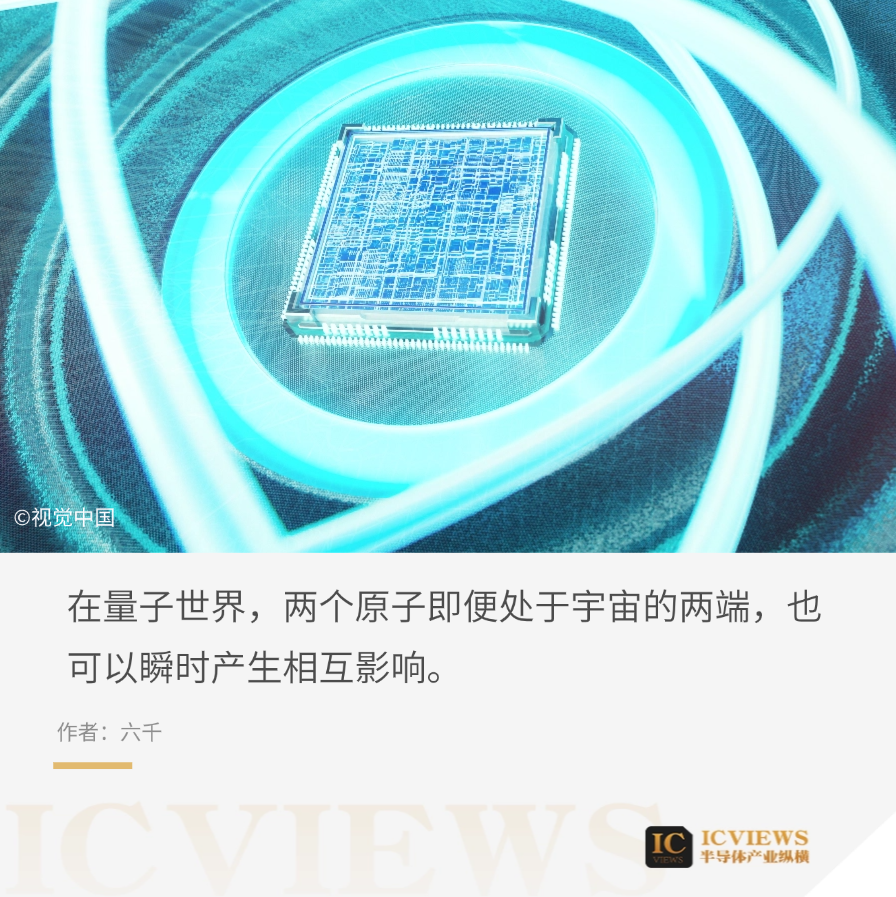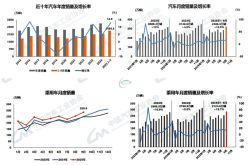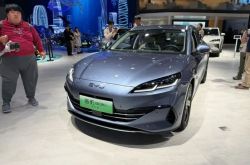The Era of Quantum Computing Arrives: Accelerated Development and Global Competition
![]() 03/17 2025
03/17 2025
![]() 627
627

Liu Cixin vividly portrayed a scene in "Time Immigrants": "The ambassador held high the quantum chip from the Hall Era, embodying the knowledge of all mankind." In this novel, the quantum chip symbolizes the continuation of Earth's civilization, encapsulating humanity's ideal vision of quantum chips: "compact, high-capacity, and ultra-fast."
The 2025 government report, released recently, emphasized the need to establish a growth mechanism for future industry investments and nurture emerging sectors such as biomanufacturing, quantum technology, embodied intelligence, and 6G. It also highlighted new achievements in quantum technology during the review of 2024 government work.
Since 2016, quantum technology has been featured prominently in government work reports, appearing six times.
Globally, 2025 has been designated by the United Nations as the "Year of Quantum Science and Technology." According to the quantum computing roadmap, Google aims to achieve its third "milestone" post-2025 by developing a quantum computer with 1000 physical qubits and encoding a long-lived logical qubit. IBM, on the other hand, plans to unveil the multi-chip processor "Kookaburra" with 1386 qubits and quantum communication links in 2025, connecting three Kookaburra chips to form a system with 4158 qubits.
Since March, numerous countries, companies, and research institutions have announced significant breakthroughs, attracting significant capital investments and industry attention.
01
Domestic: Multiple Quantum Breakthroughs, Leading the Charge
China has entered the "usable" era of quantum computers.
In March, researchers from the University of Science and Technology of China, including Pan Jianwei, Zhu Xiaobo, and Peng Chengzhi, collaborated with multiple domestic entities to successfully build the 105-qubit superconducting quantum computing prototype machine, Zu Chongzhi III.
Zu Chongzhi III processes quantum random circuit sampling problems 15 orders of magnitude faster than the fastest supercomputer currently available and 6 orders of magnitude faster than Google's latest publicly released results in October 2024, setting a new world record for quantum computing superiority in the superconducting system.
With a qubit coherence time of 72 microseconds, a parallel single-qubit gate fidelity of 99.90%, a parallel two-qubit gate fidelity of 99.62%, and a parallel readout fidelity of 99.13%, Zu Chongzhi III's comprehensive performance is at the international forefront.
In 2024, the launch and operation of the third-generation independent superconducting quantum computer "OriginPan" was heralded as a major achievement in scientific and technological innovation. Data indicates that "OriginPan" has reached 139 countries and regions worldwide. Equipped with a 72-qubit independent superconducting quantum chip "Wukong Chip," "OriginPan" achieves international advanced levels in key indicators such as qubit count and coherence time. It realizes full-chain autonomous controllability from hardware to software and is currently China's most advanced programmable and deliverable superconducting quantum computer. Since its launch on January 6, 2024, "OriginPan" has completed over 339,000 quantum computing tasks, exporting independent quantum computing power.
In addition to large-scale quantum computers, domestic enterprise Origin Quantum has launched a desktop nuclear magnetic quantum computer, completing multiple domestic and overseas deliveries, and achieving applications in universities and academic institutions such as the National Technical University of Athens and the University of the Andes.
In the field of quantum chips, Professor Wang Jianwei and his team from Peking University, along with Academician Gong Qihuang, have made successive breakthroughs.
On February 28, the journal "Nature Photonics" published the research results of Professor Wang Jianwei, his team from Peking University, and researchers such as Dai Daoxin from Zhejiang University, titled "Integrated optical entangled quantum vortex emitters." This research successfully realized a vortex light quantum entanglement source based on integrated optical quantum chips, developing the world's first quantum entanglement vortex light emitting chip.
The joint team overcame challenges related to on-chip confinement, transmission, and control of vortex quantum states, as well as phase matching required for quantum entanglement. The developed chip boasts miniaturization (5 mm × 10 mm), high stability, programmable control, and plug-and-play capabilities. It also enables microsecond-level vortex entangled state manipulation and can further expand entanglement dimensions and the number of entangled vortex light beams. This research showcases a significant improvement trend in quantum chip performance and application scalability, opening new development opportunities for applications like quantum communication.
On February 19, the journal "Nature" published the collaborative results of Professor Wang Jianwei, his team from Peking University, and Professor Su Xiaolong's team from Shanxi University. This research achieved the world's first continuous-variable quantum entangled cluster state based on integrated optical quantum chips.
This achievement marks China's entry into the "era of practical application" in quantum computing, communication, and sensing. Its reconfigurable chip can freely switch multi-qubit entangled states on-chip, with a single chip supporting thousand-qubit-level computing. Utilizing mature semiconductor tape-out processes, it doesn't require an ultra-low temperature environment and is only one millionth the size of traditional quantum systems. Quantum processors based on this chip are expected to achieve thousand-qubit-level commercial use by 2030.
02
Abroad: Technological Advances by Industry Giants
Unlike China, advancements in quantum computing abroad primarily stem from technology giants.
On February 20, Microsoft released Majorana 1, the world's first topological architecture quantum chip. Utilizing indium arsenide and aluminum, this chip designs and constructs topological conductor wires atom by atom, connecting them in an "H" shape and placing 8 units with 8 qubits on a single chip. This chip enables digital control of qubits, redefining and greatly simplifying quantum computing operations.
Microsoft stated that Majorana 1 can help quantum computers solve meaningful industrial-scale problems in the coming years, rather than decades later as previously anticipated by the scientific community.
Shortly after Microsoft's quantum chip release, Amazon Web Services (AWS) also announced the launch of a new quantum computing chip, Ocelot, which can reduce quantum error correction costs by 90%. Developed by the AWS Quantum Computing Center team at the California Institute of Technology, Ocelot adopts a new architectural design with built-in error correction functionality. It consists of two integrated silicon microchips, each approximately 1cm*1cm in size, bonded together in the form of an electrically connected chip stack.
The complete Ocelot chip comprises 14 core components: 5 data qubits (cat qubits), 5 "buffer circuits" for stabilizing qubits, and 4 additional qubits for quantum error correction.
03
Global Quantum Computing Competition Backed by Government Policies
Besides China and the United States, which have already embarked on a fierce race in quantum computing, governments and institutions worldwide are also pouring resources into the "Olympic competition" of quantum technology.
In Asia, the Japanese government research institution Molecular Science Research Institute has collaborated with Hitachi, Ltd., among others, to launch a new type of quantum computer in 2025. This is Japan's first quantum computer using the atomic method, specifically the "neutral atom method," which employs individual atoms as qubits for computation, offering high stability and suitability for large-scale computations. Initially operating with 50 qubits, this computer is planned to be expanded to about 500 qubits in the future, with the aim of developing a practical quantum computer with 10,000 qubits by 2030. According to reports, 14 companies and institutions, including Fujitsu, have participated in this project.
In Europe, the Finnish National Technology Research Center and IQM Quantum Computers have successfully developed and launched Europe's first 50-qubit superconducting quantum computer. Finland first announced its quantum computing development plan in November 2020, allocating a total of 20.7 million euros for the development of a 50-qubit quantum computer.
Margrethe Vestager, Executive Vice-President of the European Commission in charge of technological sovereignty, stated that quantum technology has reached a mature level and is of great strategic importance to the EU's sovereignty, competitiveness, and defense capabilities. Therefore, the "EU Quantum Chip Plan" is being formulated and is expected to be submitted before this summer. Simultaneously, the "Quantum Act" will also be formulated and proposed by the end of this year.
To launch the first batch of "pilot lines," the EU completed two proposal solicitation works at the end of January with a total investment of 130 million euros. Vestager also announced an additional investment of 400 million euros by 2028.
04
Why Quantum Computing?
What is the allure of quantum computing that attracts the world's top intellectual groups to collaboratively tackle this challenge? The answer can be expounded upon from two dimensions.
The first dimension lies in the relentless pursuit of computing power. Naturally, people's first impression of quantum computing is its speed. A 54-qubit quantum computer named Sycamore accomplished tasks beyond the reach of traditional architecture computers: in an experiment where the world's first supercomputer would require 10,000 years of computation, Sycamore only took 3 minutes and 20 seconds. In 2024, the Google team, leveraging the quantum processor Willow, solved a key problem that has plagued the field of quantum error correction for nearly 30 years, enabling quantum error correction to become more accurate as the number of qubits increases. It also completed a computational task within 5 minutes that one of the current most powerful supercomputers would require 1025 years to complete.
The second dimension stems from long-term considerations. Quantum computing consumes less power. With the exponential growth in current computing power demand, energy costs have become a crucial issue facing data centers. In quantum computing, the number of data sets input remains the same as the number of data sets output, and the data volume does not change during the computation process, thus eliminating energy consumption during computation. This means that energy consumption only occurs during the final measurement. This characteristic makes quantum computing more "green" and aligns with the common development goals of humanity and the Earth.
DeepSeek has ignited the world, proving the soft power of Chinese AI. The integration of quantum computing and AI has naturally become the industry's anticipated highlight. Quantum computing can accelerate AI-driven applications, such as an artificial intelligence training/inference computing power system that integrates quantum computing. When considering the unlimited potential of AI, the era of supercomputing power in human society that "integrates artificial intelligence (AI) with quantum computing" is even more exhilarating.
It will take some time before quantum computers truly drive the computing power industry. Origin Quantum, which already has landing cases, informed reporters that the current primary customer profiles for quantum computers are research institutions and educational institutions. Their main use of purchasing quantum computers is to deepen research on quantum computing or use them for demonstration in teaching. At the application level, companies represented by Origin Quantum are promoting ecological co-creation with cross-industry users. However, since quantum computing is still more adept at specialized problems and less suitable for solving general issues, it cannot yet bring revolutionary changes. Nevertheless, with the influx of capital and the participation of governments, the development of quantum computing has been faster than anticipated by the industry.
In 2024, IonQ's share price surged by 237%, and Rigetti's share price increased by nearly 1500%. These two companies' total revenue reached US$14.8 million in the third quarter of last year. The industry anticipates the emergence of quantum processors with a larger number of qubits and their engineered integrated systems in 2025.
According to Wind data, since 2025, the average increase of the 17 core concept stocks of quantum computing in China has been 18.7%, outperforming the CSI 300 Index (+3.2%) over the same period, with an average turnover rate of 208% and a turnover exceeding RMB 1.2 trillion.








